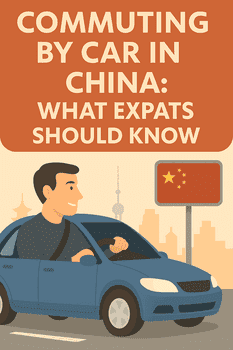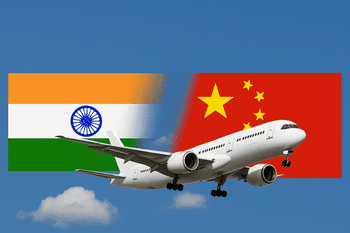
China’s urban landscape continues to evolve rapidly, with transportation options expanding alongside strict regulations.
For expats considering driving in China, understanding the current landscape is essential for navigating both legal requirements and practical challenges.
This comprehensive guide covers everything from licensing to the latest EV incentives and regional differences across Chinese cities.
Why Consider Car Commuting in China in 2025
While China boasts world-class public transportation in major cities, car commuting offers distinct advantages for certain expat situations:
- Family-friendly mobility: Essential for expats with children or those making frequent trips to international schools
- Suburban living: Necessary for those living in residential compounds outside city centers
- Professional flexibility: Valuable for business professionals visiting multiple locations daily
- Regional exploration: Ideal for weekend trips to areas poorly served by public transport
According to a 2024 InterNations Expat Survey, approximately 23% of expats in China now choose to drive regularly, up from 18% in 2022, reflecting changing mobility preferences post-pandemic.
Current Legal Requirements for Driving in China
Obtaining a Chinese Driver’s License
Foreign licenses are not valid for driving in China.
As of 2025, the process includes:
| License Type | Validity | Requirements | Processing Time | Cost (2025) |
|---|---|---|---|---|
| Temporary | 3 months | International driving permit, passport, visa | 3-5 business days | ¥200-300 |
| Permanent | Same as residence permit | Medical exam, written test, foreign license, residence permit | 10-15 business days | ¥400-500 |
Recent Changes (2024-2025):
- Online pre-application now available in tier-1 cities
- Medical exam requirements standardized nationwide
- English testing available in 19 major cities (up from 12 in 2023)
- Digital license option launched in Shanghai, Beijing, and Guangzhou
The written test consists of 100 multiple-choice questions with a passing score of 90%.
According to the China Transportation Bureau, the first-time pass rate for foreigners is approximately 65%.
Expat Tip: “The test questions can be tricky with their wording. I recommend using the official practice app for at least two weeks before attempting the exam.” – Michael, German expat in Shenzhen
Vehicle Acquisition Options
| Option | Pros | Cons | Approximate Cost (2025) |
|---|---|---|---|
| Purchase New | Warranty, latest features, EV subsidies | High upfront cost, license plate restrictions | ¥150,000-300,000+ |
| Purchase Used | Lower cost, immediate availability | Potential maintenance issues, limited warranty | ¥80,000-150,000 |
| Long-term Lease | No ownership hassle, maintenance included | Higher monthly cost, mileage restrictions | ¥3,000-8,000/month |
| Car-sharing | Pay-per-use, no ownership costs | Limited availability, advance booking needed | ¥50-150/hour |
License Plate Restrictions by City (2025):
| City | Restriction Type | Wait Time/Odds | Cost |
|---|---|---|---|
| Shanghai | Auction system | Average bid: ¥90,000+ | ¥90,000-120,000 |
| Beijing | Lottery system | <0.5% chance per round | Free if won |
| Guangzhou | Hybrid system | Lottery + auction | ¥20,000-40,000 |
| Shenzhen | Lottery system | ~1.2% chance per round | Free if won |
| Tier-2 cities | Varies by city | Generally easier | ¥0-10,000 |
Source: China Automotive Information Net
Regional Differences in Driving Conditions
Driving experiences vary dramatically across China’s diverse cities:
| City Tier | Traffic Congestion | Parking Availability | Driver Behavior | EV Infrastructure |
|---|---|---|---|---|
| Tier-1 (Beijing, Shanghai) | Severe (avg. speed 25km/h) | Very limited, expensive | Aggressive but orderly | Excellent (charging stations every 5km) |
| Tier-2 (Chengdu, Hangzhou) | Moderate to heavy | Limited in centers, better in suburbs | Moderately aggressive | Good (expanding rapidly) |
| Tier-3 and below | Light to moderate | Generally available | Often unpredictable | Limited but growing |
According to the 2025 TomTom Traffic Index, Beijing ranks 5th globally for congestion, with average commuters spending an additional 25 minutes per 30-minute trip during peak hours.
The Electric Vehicle Revolution
China leads the world in EV adoption, with significant implications for expat drivers:
- Government incentives: Non-Chinese citizens are now eligible for most EV subsidies (policy change 2024)
- Preferential treatment: EVs exempt from odd-even license plate restrictions in most cities
- Charging infrastructure: 4.2 million public charging points nationwide as of March 2025
- Special license plates: Green plates for EVs often come with shorter waiting periods
| EV Benefit | Details | Savings Potential |
|---|---|---|
| Purchase subsidies | ¥10,000-30,000 depending on range | Up to 10% of vehicle cost |
| Tax exemptions | No purchase tax (typically 10%) | ¥15,000-30,000 |
| Insurance discounts | 10-15% lower premiums | ¥1,000-2,000 annually |
| Parking privileges | Designated spaces, discounted rates | ¥3,000-6,000 annually |
| Charging subsidies | Government-subsidized electricity rates | 30-40% less than gasoline equivalent |
Source: China Association of Automobile Manufacturers
Digital Integration for Drivers
China’s driving ecosystem is highly digitized, requiring specific apps and services:
Essential Apps for Drivers in China (2025)
| App | Function | English Available? |
|---|---|---|
| Gaode Maps (高德地图) | Navigation, traffic | Partial |
| Baidu Maps (百度地图) | Navigation, POI | Partial |
| DiDi | Ride-hailing backup | Yes |
| 12123 (交管12123) | Traffic violations, license management | No |
| ETC App (etc.95559.com.cn) | Toll payment management | No |
| ETCP (e停车) | Parking payment | Partial |
Expat Tip: “I use WeChat mini-programs for almost everything driving-related now – from paying parking fees to checking my license points. The ‘Foreigner Services’ section in WeChat has an English guide to these services.” – Sarah, Canadian expat in Hangzhou
Real-World Challenges and Solutions
Traffic Violations and Police Interactions
Traffic enforcement in China relies heavily on automated cameras.
As of 2025, penalties include:
| Violation | Penalty | Points Deduction | Notes |
|---|---|---|---|
| Speeding (10-20% over) | ¥150 | 3 | Camera-enforced |
| Running red light | ¥200 | 6 | Camera-enforced |
| Illegal parking | ¥200-500 | 0 | Varies by district |
| Using phone while driving | ¥200 | 3 | Increasingly enforced |
| DUI (>20mg/100ml) | ¥1,000-2,000 | 12 | License suspension |
If stopped by police:
- Remain in vehicle unless instructed otherwise
- Present license, registration, and insurance
- Use translation app if language barrier exists
- Never offer money or gifts (severe penalties for bribery)
Accident Procedures
In case of accidents, follow this protocol:
- Ensure safety and call 122 for traffic police
- Document scene with photos
- Exchange information using the “交通事故快处” mini-program
- Contact your insurance provider immediately
- Do not admit fault or sign documents you don’t understand
According to the Ministry of Public Security, foreigners involved in accidents should request an English-speaking officer if needed, which is now standard procedure in tier-1 and most tier-2 cities.
Cost Comparison: Car vs. Alternatives (Monthly Basis)
| Expense Category | Private Car | Ride-hailing | Public Transport | E-bike |
|---|---|---|---|---|
| Fixed costs | ¥3,000-5,000 | ¥0 | ¥0 | ¥100-200 |
| Daily commute (20km) | ¥1,200-2,000 | ¥3,000-4,000 | ¥400-600 | ¥100-150 |
| Parking | ¥1,000-3,000 | ¥0 | ¥0 | ¥0-100 |
| Insurance | ¥500-1,000 | ¥0 | ¥0 | ¥20-50 |
| Maintenance | ¥300-800 | ¥0 | ¥0 | ¥50-100 |
| Total Monthly Cost | ¥6,000-11,800 | ¥3,000-4,000 | ¥400-600 | ¥270-600 |
| Time spent (monthly) | 30-40 hours | 25-35 hours | 40-60 hours | 35-45 hours |
Source: China Urban Transportation Research Institute, 2025 data
Environmental Considerations
China’s air quality issues and carbon reduction goals impact driving policies:
- Emission-based restrictions: Many cities now limit high-emission vehicles during pollution alerts
- Carbon footprint: The average gasoline car in China produces 4.6 tons of CO2 annually
- Air quality apps: Essential for monitoring daily pollution levels that might affect driving visibility
According to the Ministry of Ecology and Environment, days with driving restrictions due to pollution have decreased by 42% since 2020, but still occurred on average 18 days per year in northern cities during 2024.
Expert Resources for Expat Drivers
Driving Schools with English Services
| City | School Name | Services | Contact |
|---|---|---|---|
| Beijing | International Drivers Training | License prep, defensive driving | Website |
| Shanghai | Expat Driving School | Test preparation, simulator training | Website |
| Guangzhou | GZ Foreign Drivers | License conversion, road practice | Website |
| Shenzhen | SZ Driving Center | English test prep, driving lessons | Website |
Official Resources
- China Traffic Management Bureau – Official traffic regulations and updates
- Foreign Residents Service Platform – Government services for foreigners including driving
- China Road Safety Forum – Safety statistics and educational resources
Conclusion
Driving in China offers expats independence and flexibility but requires navigating complex regulations, regional differences, and a rapidly evolving transportation landscape.
With proper preparation, understanding of local norms, and digital integration, car commuting can be a viable option for expats seeking to enhance their mobility in China.
The decision to drive should be based on your specific circumstances, location, and comfort level with local traffic conditions.
As China continues its push toward electrification and smart transportation, staying informed about policy changes and technological developments will be essential for expat drivers.



